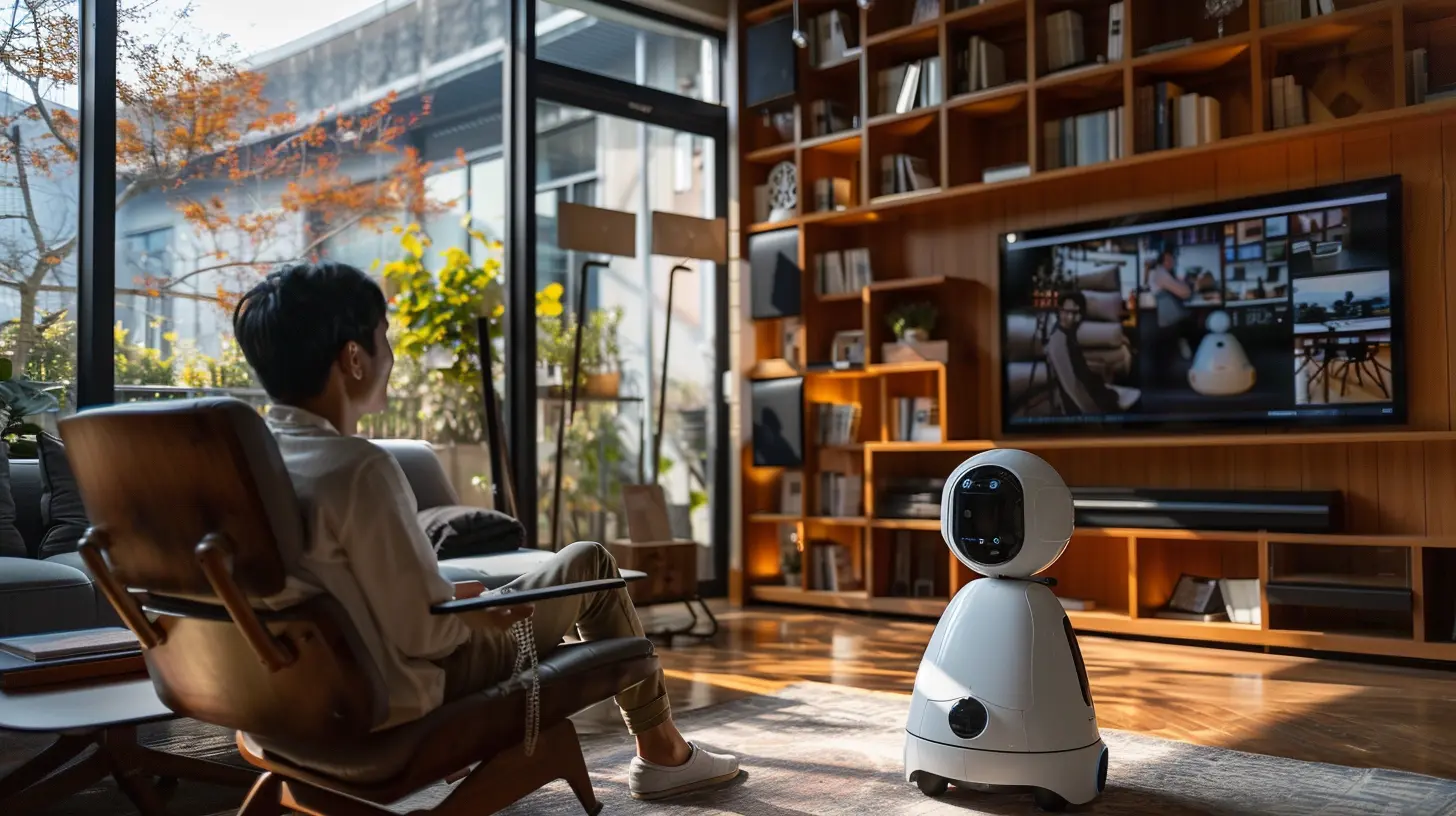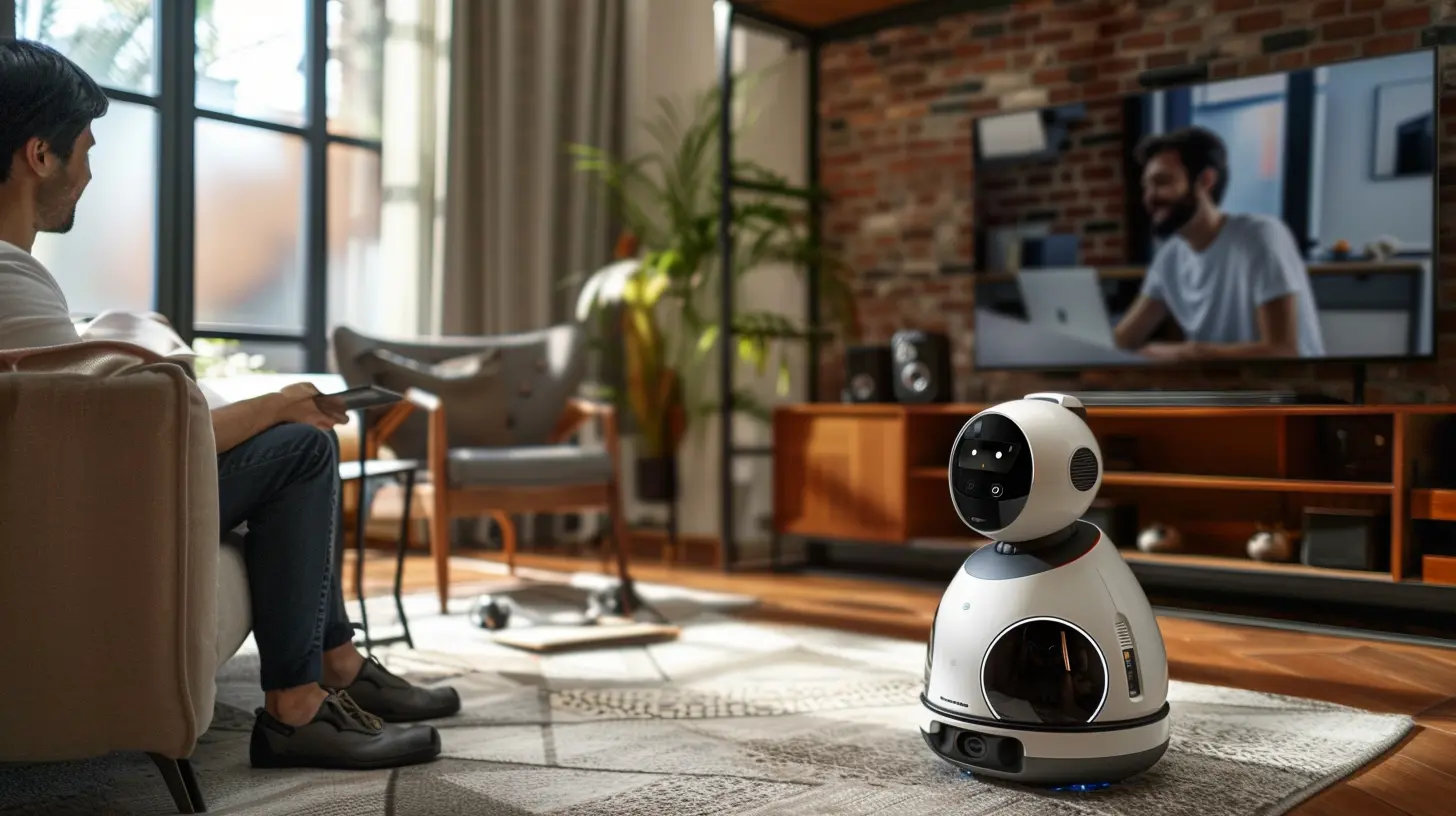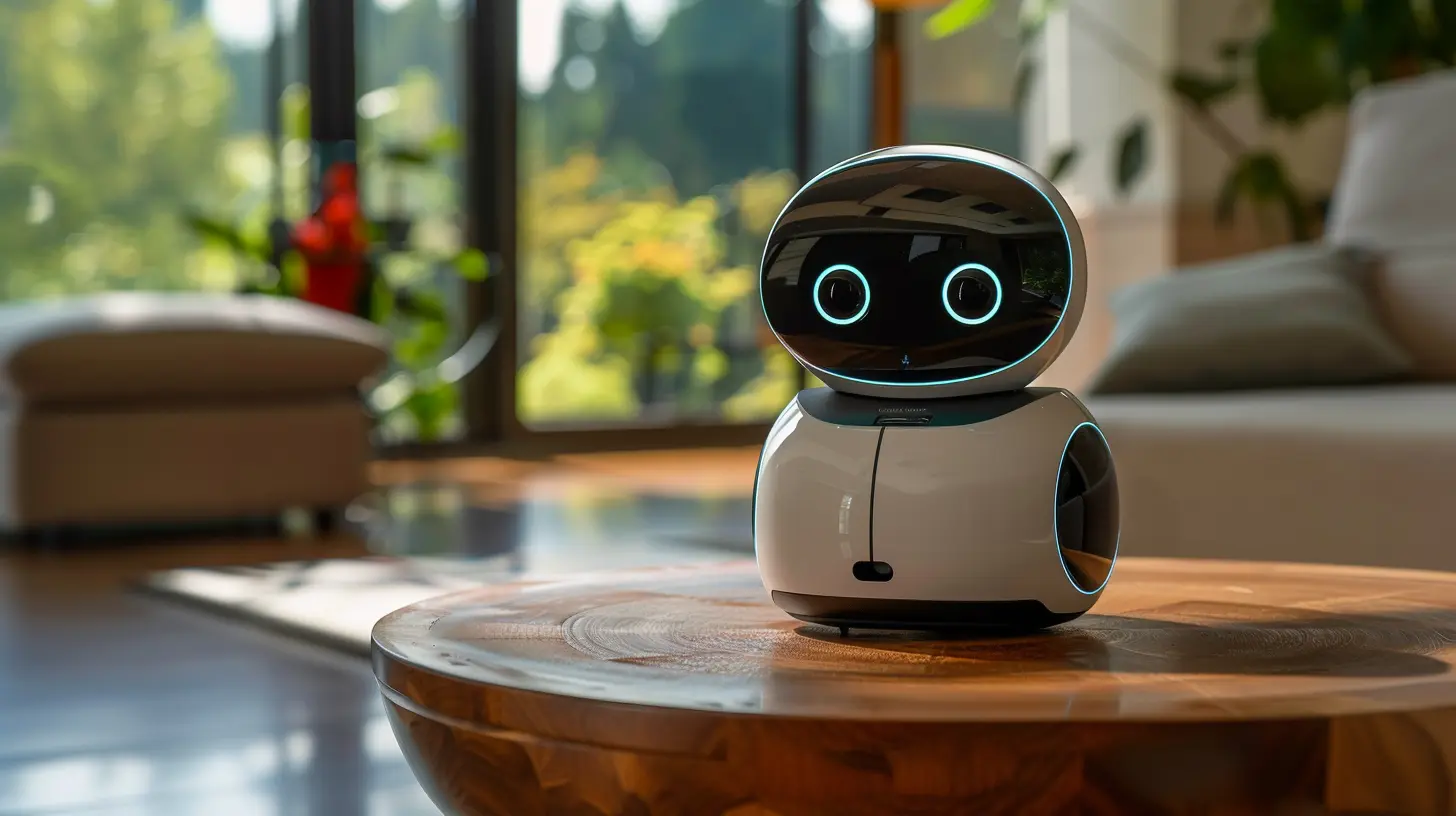The Future of Telepresence Robots in Remote Work
17 February 2025
Remote work has been on the rise for years, but it exploded into the mainstream during the COVID-19 pandemic. Fast forward, and now it's clear that remote work is here to stay. But as we settle into this new way of working, we're starting to ask some interesting questions: How do we make remote work even better? How can we bridge the gap between being physically present and working from a distance? Enter telepresence robots.
These fascinating little machines are no longer just sci-fi dreams. They're real, and they’re playing a bigger role in how we interact and collaborate across distances. But can telepresence robots redefine the future of remote work? Let’s dive into what they're capable of, how they fit into our work culture, and what their future could look like.

What Are Telepresence Robots, Anyway?
If you’re scratching your head wondering what a telepresence robot is, don't worry—you’re not alone. In simple terms, a telepresence robot is a remote-controlled, wheeled device that lets you be "present" somewhere without actually being there. Think of them like a video conferencing tool on steroids. Instead of just seeing someone's face on a screen, a telepresence robot lets you move around and interact with the physical environment, almost like you’re there in person.They typically come with a camera, microphone, and speaker, allowing for real-time communication. They can move around an office, attend meetings, or even visit different rooms, all while you control it from your home (or wherever you are). It’s like having your very own avatar walking around the office—just, you know, with a robotic body.

The Rise of Remote Work and Why Telepresence Robots Matter
Before we get into the nitty-gritty of what these robots can do, let’s talk about why they matter in the first place. Remote work is no longer just a perk companies offer to attract talent; it's becoming the norm. According to recent studies, a significant percentage of workers now expect the flexibility to work from home, at least part of the time. But there’s a downside.While Zoom calls and Slack messages are great, they can't fully replicate the physical, in-person experience of being part of a team. Sometimes, you miss out on those hallway conversations, impromptu brainstorms, or even just the general vibe of the office. This is where telepresence robots come in—they help to close that gap.
Imagine being able to "walk" into a meeting room, turn towards your co-workers when they speak, or even just pop by someone’s desk for a quick chat. That’s what these robots can offer—a more immersive experience that helps remote workers feel genuinely present, not just a face on a screen.

Benefits of Telepresence Robots in Remote Work
So, why should companies and remote workers care about telepresence robots? The benefits are more than just cool tech gimmicks. Here’s why they could be game-changers:1. Enhanced Collaboration
One of the biggest challenges of remote work is collaboration. Sure, tools like Slack, Zoom, and Google Docs have made it easier to work together from a distance, but nothing beats face-to-face interaction. Telepresence robots offer a middle ground. You can physically "be" in the office for meetings, brainstorming sessions, or even casual conversations, without having to hop on a plane or commute to the office.2. Global Team Integration
Many companies now have global teams spread across multiple time zones. Telepresence robots can help bridge the gap between these remote teams. Picture someone in New York "walking" through a factory in Japan, inspecting machines, or attending a meeting in real-time. That's the kind of flexibility these robots offer, making it easier to manage global operations.3. Increased Engagement and Productivity
Remote work often leads to feelings of isolation, which can affect employee morale and productivity. A telepresence robot gives you the opportunity to engage more actively with your team. It’s a lot easier to stay connected when you can roll into a meeting room or even join team lunches (virtually, of course). And when you're more engaged, you're naturally more productive.4. Cost and Time Savings
Let’s face it: business travel is expensive and time-consuming. Telepresence robots can cut down on unnecessary trips. Need to attend a conference or check out a new office location? Instead of booking flights and hotels, you could simply send your robot counterpart. It's a win-win situation—you save time, money, and reduce your carbon footprint.5. Accessibility for Disabled Workers
Telepresence robots can also be a game-changer for workers with mobility issues. For someone with physical disabilities, navigating a traditional office environment may be challenging. But a telepresence robot can allow them to participate in meetings, move around the office, and engage with colleagues more freely, leveling the playing field for everyone.
Challenges Facing Telepresence Robots
Of course, no technology is without its challenges, and telepresence robots are no exception. While their potential is exciting, a few hurdles need to be overcome before they can fully revolutionize remote work.1. Cost
Let’s get the elephant in the room out of the way: telepresence robots aren’t exactly cheap. While prices have come down in recent years, they can still cost several thousand dollars per unit. For smaller businesses or startups, this might be a tough sell. But as with most technology, prices will likely drop as the robots become more mainstream and mass production ramps up.2. Technical Limitations
Telepresence robots are cool, but they’re not perfect. For one, most models still require a decent Wi-Fi connection to function properly, which could be an issue in areas with spotty internet. Battery life is another limitation—some robots can only operate for a few hours before needing a recharge. And while the robots can move around, they’re not exactly fast or nimble, especially in crowded or cluttered environments.3. Acceptance and Adoption
Even if the technology is there, will people actually use it? There’s always a bit of hesitation when it comes to adopting new technology, and telepresence robots are no different. Some people might feel awkward or uncomfortable interacting with a robot, while others may prefer more traditional forms of communication, like phone calls or video chats. Overcoming the "weirdness" factor might take some time.4. Privacy and Security Concerns
As with any connected device, privacy and security are always concerns. Telepresence robots are essentially mobile cameras, and there are potential risks if they’re hacked or misused. Companies will need to ensure that appropriate cybersecurity measures are in place to protect sensitive information.The Future of Telepresence Robots in Remote Work
Alright, let’s talk about the future. Where are we headed with telepresence robots, and how might they evolve in the coming years?1. Smarter Robots with AI Integration
Right now, most telepresence robots are controlled manually, but that could change with advancements in AI. In the future, we might see robots that are capable of navigating environments on their own or even responding to voice commands. Imagine telling your robot to "go to the conference room" and it just... does it. That’s the kind of AI integration we could see in the near future.2. Virtual Reality and Augmented Reality Integration
While telepresence robots already offer a sense of "being there," combining them with VR or AR could take things to the next level. Imagine not just seeing through the robot's camera but experiencing the office through a virtual reality headset. You could interact with the environment in a much more immersive way, which could be a game-changer for remote work.3. Wider Adoption Across Industries
Right now, telepresence robots are mostly used in offices or educational settings, but their potential goes far beyond that. We could see them being used in healthcare (for remote consultations), retail (for virtual store visits), or even tourism (for virtual sightseeing tours). As the technology improves and becomes more affordable, more industries will likely jump on board.4. More Affordable Solutions
As with any new technology, telepresence robots will likely become more affordable over time. Just as we saw with smartphones or laptops, production costs will decrease, and competition among manufacturers will drive prices down. This means that even smaller companies will be able to get in on the action, making telepresence robots a more common tool in the workplace.
Wrapping It Up
Telepresence robots are no longer just a fun futuristic gadget—they’re becoming a practical tool for remote work. As companies continue to embrace flexible work arrangements, the need for better, more immersive communication tools will only grow. Telepresence robots offer a unique solution by making remote workers feel more present and engaged, despite the physical distance.While there are still some challenges to overcome, the potential benefits are hard to ignore. Whether it’s improving collaboration, increasing productivity, or saving on travel costs, telepresence robots could be a key player in shaping the future of remote work.
So, are you ready to send your robotic avatar to your next office meeting?
all images in this post were generated using AI tools
Category:
RoboticsAuthor:

Marcus Gray
Discussion
rate this article
20 comments
Zaylee Kirkland
Sure, telepresence robots might save us from daily commutes, but let’s be real: Who wants to argue with a robot over who gets to use the good conference room? The future looks both exciting and awkward!
March 20, 2025 at 12:35 PM

Marcus Gray
You're right—while telepresence robots can enhance remote collaboration, they might also introduce new dynamics and challenges in the workplace. It's a fascinating mix of potential and awkwardness!
Isabelle McCarty
Telepresence robots: because sometimes your coworkers need to see your face, even if it's coming from a wheeled screen!
March 19, 2025 at 12:58 PM

Marcus Gray
Absolutely! Telepresence robots bridge the gap between remote work and personal interaction, making virtual collaboration feel more human.
Lira McCollum
Telepresence robots: because sometimes, your co-worker’s face should be on wheels instead of a Zoom call!
March 19, 2025 at 5:41 AM

Marcus Gray
Absolutely! Telepresence robots add a personal touch to remote work, bridging the gap between virtual and physical presence.
Phoebe McAuley
Telepresence robots will revolutionize remote work, enhancing collaboration and engagement while bridging the gap between physical and virtual spaces.
March 18, 2025 at 1:34 PM

Marcus Gray
Thank you for your insightful comment! I agree that telepresence robots have the potential to significantly enhance collaboration and engagement in remote work settings.
Grant Love
Telepresence robots for remote work? Finally, my office can have a 'face' that doesn’t roll its eyes when I ask for more coffee! Who knew the future would be filled with bots pretending to take notes while I sneak in a quick cat video break?!
March 16, 2025 at 7:58 PM

Marcus Gray
Glad you see the humor in it! Telepresence robots can definitely add a fun twist to remote work while keeping us connected. Just think of them as your virtual office buddy!
Hattie Clarke
This article insightful explores the transformative potential of telepresence robots in remote work. As technology advances, these robots could enhance collaboration and connectivity, making remote teams feel more integrated. Excited to see how this evolves in the coming years!
March 14, 2025 at 5:50 AM

Marcus Gray
Thank you for your thoughtful comment! I'm glad you found the article insightful. Indeed, the potential of telepresence robots to enhance remote collaboration is truly exciting!
Hawk Kearns
Telepresence robots could revolutionize remote work by enhancing communication and collaboration, bridging distances, and creating immersive work environments. Exciting possibilities ahead!
March 12, 2025 at 12:41 PM

Marcus Gray
Thank you for your insights! I completely agree—telepresence robots hold great potential to transform remote work dynamics and foster deeper connections among teams. Exciting times ahead indeed!
Bear Hensley
Great insights on the evolution of telepresence robots in remote work! It's fascinating to see how technology is bridging the gap between virtual and physical presence. I can’t wait to see how these innovations enhance collaboration and connectivity in our increasingly digital workplaces. Keep up the great work!
March 9, 2025 at 11:19 AM

Marcus Gray
Thank you for your thoughtful comment! I'm glad you found the insights valuable. Exciting times ahead for telepresence technology in enhancing remote collaboration!
Adria Kearns
Telepresence robots might just be the ultimate remote coworker—who wouldn’t want that?
March 7, 2025 at 1:59 PM

Marcus Gray
Absolutely! Telepresence robots offer a unique way to enhance remote collaboration, making interactions more engaging and dynamic.
Eleanor Bellamy
The future of telepresence robots in remote work is limitless! As technology evolves, these robots will redefine collaboration, bridge distances, and empower us to engage like never before. Embrace the revolution and unlock new possibilities!
March 6, 2025 at 1:50 PM

Marcus Gray
Thank you for your enthusiasm! Indeed, the potential of telepresence robots in transforming remote work is exciting and full of possibilities.
Aubrey Yates
This article beautifully captures the potential of telepresence robots to transform remote work. It's inspiring to see technology bridging the gap between colleagues and fostering connection, especially in an increasingly virtual world. Great insights!
March 4, 2025 at 7:41 PM

Marcus Gray
Thank you for your thoughtful comment! I'm glad you found the insights inspiring. Telepresence robots truly have the potential to revolutionize remote work.
Calder McAdams
Exciting advancements ahead for remote collaboration!
March 2, 2025 at 1:49 PM

Marcus Gray
Absolutely! The future of telepresence robots will revolutionize remote work, making collaboration more seamless and engaging.
Ranger McCabe
Telepresence robots will revolutionize remote work by enhancing collaboration, bridging distances, and providing immersive experiences that traditional tools cannot match.
February 25, 2025 at 12:49 PM

Marcus Gray
Thank you for your insight! I completely agree—telepresence robots have the potential to transform remote work by fostering better collaboration and creating more engaging experiences.
Meagan Carter
This article insightfully highlights the transformative potential of telepresence robots in remote work. As collaboration evolves, these technologies will bridge distances, enhance engagement, and redefine workplace dynamics, making remote teams more connected and productive. Exciting developments ahead!
February 23, 2025 at 8:27 PM

Marcus Gray
Thank you for your insightful comment! I completely agree that telepresence robots will play a crucial role in shaping the future of remote collaboration and enhancing team dynamics. Exciting times ahead indeed!
Casey Barker
Telepresence robots will enhance collaboration and connection in remote work environments significantly.
February 22, 2025 at 8:47 PM

Marcus Gray
I completely agree! Telepresence robots have the potential to revolutionize remote collaboration by fostering a greater sense of presence and engagement among team members.
Eli Miller
Great insights on the evolving role of telepresence robots! As remote work continues to shape our professional landscape, it's exciting to see how these technologies will enhance collaboration and connectivity. Looking forward to the future!
February 21, 2025 at 5:48 AM

Marcus Gray
Thank you! I'm glad you found the insights valuable. The future of telepresence robots holds great potential for transforming remote collaboration!
Verity McVicker
As remote work evolves, telepresence robots could redefine "presence" in the workplace. Imagine attending meetings from your living room as a digital avatar—no more awkward video freezes! The future isn’t just about working from anywhere; it’s about being anywhere, even in spirit. Let’s roll into this next frontier together!
February 20, 2025 at 9:36 PM

Marcus Gray
Absolutely! Telepresence robots have the potential to enhance our work experiences by bridging the gap between physical presence and remote participation, making collaboration more seamless and engaging. Exciting times ahead!
Quill Bellamy
Telepresence robots: bridging the gap between virtual and physical presence, redefining collaboration as we navigate the future of remote work.
February 19, 2025 at 7:36 PM

Marcus Gray
Thank you! Telepresence robots indeed represent a pivotal innovation, enhancing remote collaboration by seamlessly integrating virtual and physical interactions. Their role in shaping the future of work is truly exciting!
Ramona Powell
Telepresence robots: because Zoom just fizzled!
February 19, 2025 at 11:22 AM

Marcus Gray
Absolutely! Telepresence robots offer a dynamic, immersive experience that enhances remote interactions beyond what traditional video calls can achieve.
April Carrillo
Exciting potential for enhanced collaboration!
February 17, 2025 at 3:54 AM

Marcus Gray
Thank you! We're optimistic about how telepresence robots can transform teamwork and communication in remote settings.
MORE POSTS

How to Use Teleconverters to Extend Your Lens’s Reach

Innovative Gadgets That Make Commuting a Breeze

Mastering Clean Code: Best Practices for Maintainable Software

The Role of Artificial Intelligence in Cloud Computing

Turn Your Smart Speaker into a Virtual DJ for Your Next Party

The Future of Mirrorless Cameras: What to Expect from the Next Generation

High-Tech Gadgets That Make Your Life Easier

How Blockchain is Shaping the Future of Secure Devices

How to Incorporate Machine Learning Models into Your Software

The Shift to Smaller Form Factor PCs: What You Gain and What You Lose

How to Keep Your Camera Gear Safe on Outdoor Adventures

Can AI Help Solve Its Own Ethical Problems?